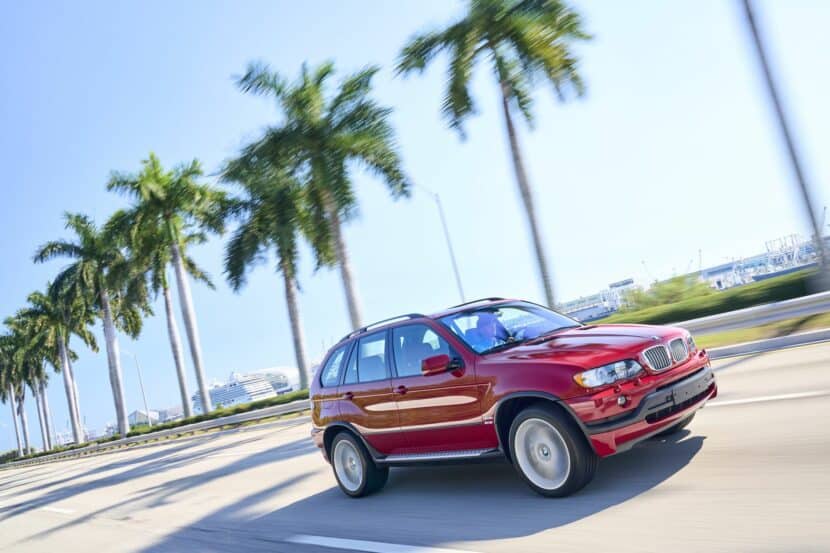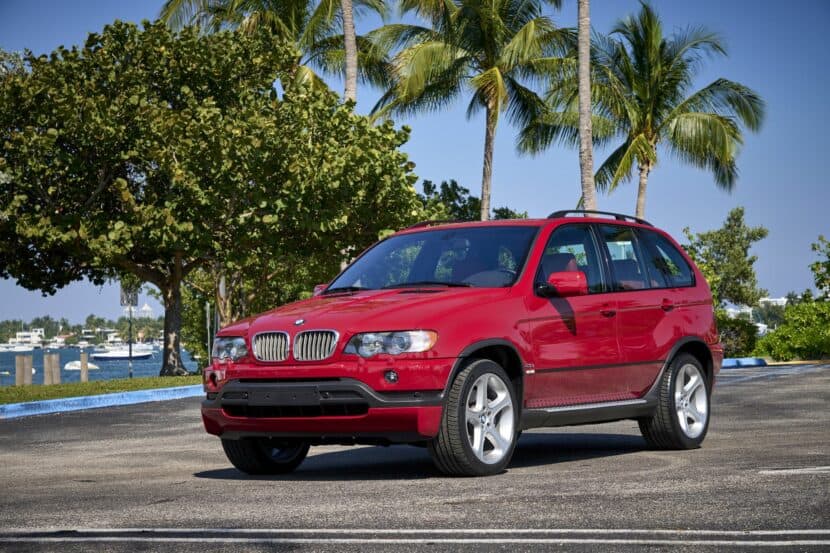BMW showcased some of their rare classic cars during a press trip from Miami to Amelia Island. The cars included various Z3 and Z4 Roadsters, as well as two unique BMW X5s. The first X5 was a limited edition Neiman Marcus model, one of only 50 ever made, while the other was a low-mileage 4.6is model with only 800 miles on the odometer. Of course, the invited international media group was impressed by both vintage SUVs. However, before I delve into our experience with the X5 4.6is, let’s reminisce about the past.
The car that changed BMW
In the 1990s, BMW was a very different car company compared to today, with a simpler product line that adhered to the “Ultimate Driving Machine” philosophy. However, in 1999, BMW surprised the automotive world by introducing its first SUV – the E53 X5. While other luxury brands like Mercedes-Benz and Lexus had already developed crossovers, BMW’s move was considered radical and unexpected, as the brand was known for producing lightweight and rear-wheel drive sports cars, making the introduction of an SUV a shocking development.
However, the introduction of the BMW X5 would prove to be a pivotal point for the brand moving forward, changing BMW forever. As well as its M Division. The BMW X5 4.6is was a high-performance SUV produced by BMW from 2001 to 2003. It was based on the E53 platform, which was the first SUV made by BMW from 1999 to 2006. The 4.6is was developed after BMW’s acquisition of Land Rover and shared some components with the Range Rover.
The BMW X5 4.6is
The BMW X5 4.6is was powered by a 4.6-liter V8 engine that produced 342 horsepower and 350 lb-ft of torque. It could accelerate from 0 to 60 mph in 6.2 seconds and had a top speed of 150 mph. It was mated to a 5-speed automatic transmission with a shorter final drive and a higher stall speed torque converter than the standard X5. As a fun fact: the M62B46 engine drew some inspiration from ALPINA’s own V8, including some hardware parts.
The media referred to the car as an unofficial X5 M during that period, which raises the question why it wasn’t named X5 M. The product manager during that time gave an explanation to Road & Track magazine. “It just did not feel right — it did not deliver the right driving experience,” adding that M-badged vehicles are typically rear-drive only, have manual transmissions and have their torque peaks shifted nearer to redline.”
Fast forward a few years later and BMW joined the segment of high-performance SUVs with an official M badge. So naturally, I was extremely excited to sample this X5 4.6is for the first time in my life. As someone who had driven multiple E53 models before, I was curious to experience the appearance and driving experience of a BMW SUV that resembled an M model in 2003.
For starters, the BMW X5 4.6is has a unique exterior design with rear fender flares, different front and rear bumpers, 20-inch wheels, and two-piece taillights. It also had wind splitters at the front and a diffuser at the rear. It even came with some oval exhaust tips, like you see on ALPINA’s models. The brake system was upgraded with 14.0-in front rotors and 12.8-in rears, vented all around. The tires were massive as well – 275 front / 315 rear. Another fun fact: the Michelin Diamaris tires made their U.S. debut with the X5 4.6is.
As you’d expect, the BMW X5 4.6is came with a sporty interior with red leather seats, an alcantara headliner and an M Sport steering wheel. The gauges had light gray faces inherited from the E39 M5, and a satellite navigation system with a dot-matrix display. The foldable display reveals an old school cassette player. Under the armrest, BMW even left the original sat phone which still had a plastic cover on it. The seating position is also a bit odd, both in the front and rear. The driver and passengers sit quite high, again by today’s standards.
Driving Experience
Although Florida is not an ideal place for an exciting driving experience due to its flat landscape, there were some opportunities for a bit of driving dynamics on sharp exit ramps and backroads. You can tell though that this was BMW’s first attempt at an M SUV. Compared to the composed and refined X5 M and X6 M models we’re getting today, the X5 4.6is rides tall with a good amount of body roll. The chassis feels rigid and the air suspension is certainly stiff by today’s standards. Speaking of the latter, the 4.6is models came with thicker anti-roll bars and stiffer springs and shocks.
The highly praised hydraulic steering feels so different in this X5. While it’s still fairly connected to the road and with plenty of feedback coming through the tires, it is definitely not as sharp as precise as similar BMWs of that era. It just feels more like a limousine with a high-ground clearance, easy to manuever in city centers as well. Of course, the E53 generation featured the predecessor of the xDrive system – an all-wheel drive setup with a rear bias. But again, not enough curvy roads to put that to test.
Yet, you could see why the BMW X5 4.6is was once considered the “fastest SUV on the planet.” The naturally-aspirated engine is a beauty on its own, pulling hard this 5100 lbs SUV once it hits the right RPM band. Passing other vehicles on the highway is effortless, and the sound of the exhaust makes us long for the past when things were simpler. And less regulated.
It is noteworthy that the used car market for this model is interesting with many units being sold for around $20,000. Comparatively, this seems like a good bargain when compared to classic BMWs from the early 2000s that have become more expensive. Regardless of whether you plan to purchase one or not, it is essential to drive an E53 BMW X5 4.6is. So, if you get the opportunity to experience a part of BMW’s history, don’t miss it.
I certainly didn’t.






